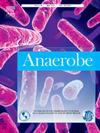艰难梭菌感染的实验室诊断:过去、现在和将来。
IF 2.6
3区 生物学
Q3 MICROBIOLOGY
引用次数: 0
摘要
艰难梭菌是一种革兰氏阳性、孢子形成的厌氧肠病原体,可导致多种临床疾病,从轻度腹泻到假膜性结肠炎或中毒性巨结肠。它是卫生保健相关性腹泻的主要原因,但在过去几年中,社区相关性艰难梭菌感染(CDI)的报道越来越多。这篇叙述性综述的目的是提供方法和最推荐的策略的全面概述,并简要描述CDI诊断的主要缺陷和新发展。由于医生缺乏对CDI的认识,诊断不足仍然很重要。适当选择粪便样本,并在实验室水平上实施排斥标准是提供准确诊断CDI的必要条件。用于诊断的方法通常根据其目标分为三类:检测艰难梭菌存在的方法(培养,谷氨酸脱氢酶[GDH]的酶免疫分析法[EIA]),检测粪便中游离毒素的方法(毒素的EIA)和检测产毒艰难梭菌菌株的方法(核酸扩增试验[NAAT],产毒培养)。没有独立的方法可以用于CDI诊断。欧洲临床微生物学和传染病学会(ESCMID)推荐两步算法和敏感筛选试验(NAAT或GDH EIA)。如果筛查结果为阴性,则可排除CDI诊断。如果筛选试验呈阳性,则应使用针对游离毒素的第二次高度特异性试验,例如毒素a /B的EIA。实施这一策略可以提高CDI诊断的准确性,从而改善患者的管理和临床结果。本文章由计算机程序翻译,如有差异,请以英文原文为准。
Laboratory diagnosis of Clostridioides difficile infection: past, present and future
Clostridioides difficile is a gram-positive, spore-forming anaerobic enteropathogen responsible for a wide spectrum of clinical diseases ranging from mild diarrhoea to pseudomembranous colitis or toxic megacolon. It is the main cause of healthcare-associated diarrhoea, but community-associated Clostridioides difficile infections (CDI) have been increasingly reported in the past few years. This narrative review aims to provide a comprehensive overview of the methods and most recommended strategy, and a brief description of the main pitfalls and new developments in CDI diagnosis. Underdiagnosis still remains important due to a lack of physicians' awareness for CDI. Appropriate selection of stool samples, and implementation of rejection criteria at the lab level are essential to provide an accurate diagnosis of CDI. Methods used for the diagnosis are usually classified into 3 groups according to their targets: those detecting the presence of C. difficile (culture, enzyme immunoassays [EIA] for glutamate dehydrogenase [GDH]), those detecting free toxins in stools (EIA for toxins) and those detecting a toxigenic C. difficile strain (nucleic acid amplification test [NAAT], toxigenic culture). No stand-alone method can be used for the CDI diagnosis. The European Society for Clinical Microbiology and Infectious Diseases (ESCMID) recommends a two-step algorithm with a sensitive screening test (NAAT or GDH EIA). If the screening test is negative, the CDI diagnosis can be ruled out. If the screening test is positive, a second highly specific test targeting free toxins should be used, such as EIA for toxin A/B. Implementing this strategy enables a better accuracy of CDI diagnosis, thus improving patient's management and clinical outcomes.
求助全文
通过发布文献求助,成功后即可免费获取论文全文。
去求助
来源期刊

Anaerobe
生物-微生物学
CiteScore
5.20
自引率
8.70%
发文量
137
审稿时长
76 days
期刊介绍:
Anaerobe is essential reading for those who wish to remain at the forefront of discoveries relating to life processes of strictly anaerobes. The journal is multi-disciplinary, and provides a unique forum for those investigating anaerobic organisms that cause infections in humans and animals, as well as anaerobes that play roles in microbiomes or environmental processes.
Anaerobe publishes reviews, mini reviews, original research articles, notes and case reports. Relevant topics fall into the broad categories of anaerobes in human and animal diseases, anaerobes in the microbiome, anaerobes in the environment, diagnosis of anaerobes in clinical microbiology laboratories, molecular biology, genetics, pathogenesis, toxins and antibiotic susceptibility of anaerobic bacteria.
 求助内容:
求助内容: 应助结果提醒方式:
应助结果提醒方式:


